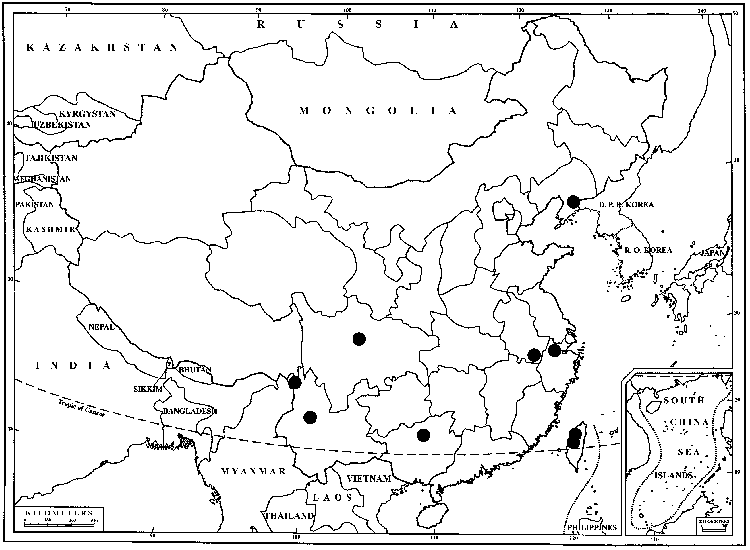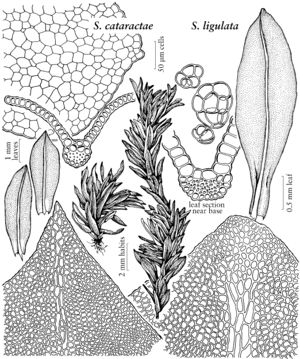Difference between revisions of "Scopelophila ligulata"
J. Bot. 19: 14. 1881,.
FNA>Volume Importer |
imported>Volume Importer |
||
| (6 intermediate revisions by 2 users not shown) | |||
| Line 6: | Line 6: | ||
|place=19: 14. 1881, | |place=19: 14. 1881, | ||
}} | }} | ||
| − | |basionyms={{Treatment/ID/ | + | |basionyms={{Treatment/ID/Basionym |
|name=Encalypta ligulata | |name=Encalypta ligulata | ||
|authority=Spruce | |authority=Spruce | ||
| + | |rank=species | ||
| + | |publication_title=Musci Pyren., no. | ||
| + | |publication_place=331. 1847 | ||
}} | }} | ||
|synonyms={{Treatment/ID/Synonym | |synonyms={{Treatment/ID/Synonym | ||
|name=Merceya ligulata | |name=Merceya ligulata | ||
|authority=(Spruce) Schimper | |authority=(Spruce) Schimper | ||
| + | |rank=species | ||
}} | }} | ||
|hierarchy=Pottiaceae;Pottiaceae subfam. Merceyoideae;Scopelophila;Scopelophila ligulata | |hierarchy=Pottiaceae;Pottiaceae subfam. Merceyoideae;Scopelophila;Scopelophila ligulata | ||
| Line 27: | Line 31: | ||
|elevation=moderate to high elevations (300-1900 m) | |elevation=moderate to high elevations (300-1900 m) | ||
|distribution=Ariz.;Ark.;Calif.;Ga.;Ill.;La.;Mich.;N.C.;Tenn.;Va.;Mexico;Central America;w South America;Europe;Asia;Africa. | |distribution=Ariz.;Ark.;Calif.;Ga.;Ill.;La.;Mich.;N.C.;Tenn.;Va.;Mexico;Central America;w South America;Europe;Asia;Africa. | ||
| − | |discussion=<p>The blackened proximal leaves and nearly isodiametric distal laminal cells help separate Scopelophila ligulata from Tortula. Leaf blackening, possibly associated with iron in the soil, also occurs in the common species Barbula unguiculata, which, however, has lanceolate leaves. Two variants are weakly distinguishable, a “hydric” form with a loosely pulvinate habit and flaccid, spreading leaves with the distal laminal cells thin-walled and the enlarged basal cells often extending beyond mid leaf, and a “montane” form with a densely pulvinate habit and narrow, firm, appressed leaves with the distal laminal cells mostly thick-walled and the enlarged basal cells mostly confined to the proximal third of the leaf (R. H. Zander 1967).</p> | + | |discussion=<p>The blackened proximal leaves and nearly isodiametric distal laminal cells help separate <i>Scopelophila ligulata</i> from <i>Tortula</i>. Leaf blackening, possibly associated with iron in the soil, also occurs in the common species <i>Barbula unguiculata</i>, which, however, has lanceolate leaves. Two variants are weakly distinguishable, a “hydric” form with a loosely pulvinate habit and flaccid, spreading leaves with the distal laminal cells thin-walled and the enlarged basal cells often extending beyond mid leaf, and a “montane” form with a densely pulvinate habit and narrow, firm, appressed leaves with the distal laminal cells mostly thick-walled and the enlarged basal cells mostly confined to the proximal third of the leaf (R. H. Zander 1967).</p> |
|tables= | |tables= | ||
|references={{Treatment/Reference | |references={{Treatment/Reference | ||
| Line 39: | Line 43: | ||
-->{{#Taxon: | -->{{#Taxon: | ||
name=Scopelophila ligulata | name=Scopelophila ligulata | ||
| − | |||
|authority=(Spruce) Spruce | |authority=(Spruce) Spruce | ||
|rank=species | |rank=species | ||
| Line 53: | Line 56: | ||
|publication year= | |publication year= | ||
|special status= | |special status= | ||
| − | |source xml=https:// | + | |source xml=https://bitbucket.org/aafc-mbb/fna-data-curation/src/2e0870ddd59836b60bcf96646a41e87ea5a5943a/coarse_grained_fna_xml/V27/V27_702.xml |
|subfamily=Pottiaceae subfam. Merceyoideae | |subfamily=Pottiaceae subfam. Merceyoideae | ||
|genus=Scopelophila | |genus=Scopelophila | ||
Latest revision as of 21:27, 5 November 2020
Stems with sparse brown rhizoids. Cauline leaves brownish black proximally; margins usually bordered by thick-walled cells; apex obtuse to acute; costa with 1 layer of parenchymatous cells adaxial to the stereid band. Sporophytes not seen in area of the flora.
Habitat: Soil and rock, cliffs and road cuts
Elevation: moderate to high elevations (300-1900 m)
Distribution

Ariz., Ark., Calif., Ga., Ill., La., Mich., N.C., Tenn., Va., Mexico, Central America, w South America, Europe, Asia, Africa.
Discussion
The blackened proximal leaves and nearly isodiametric distal laminal cells help separate Scopelophila ligulata from Tortula. Leaf blackening, possibly associated with iron in the soil, also occurs in the common species Barbula unguiculata, which, however, has lanceolate leaves. Two variants are weakly distinguishable, a “hydric” form with a loosely pulvinate habit and flaccid, spreading leaves with the distal laminal cells thin-walled and the enlarged basal cells often extending beyond mid leaf, and a “montane” form with a densely pulvinate habit and narrow, firm, appressed leaves with the distal laminal cells mostly thick-walled and the enlarged basal cells mostly confined to the proximal third of the leaf (R. H. Zander 1967).
